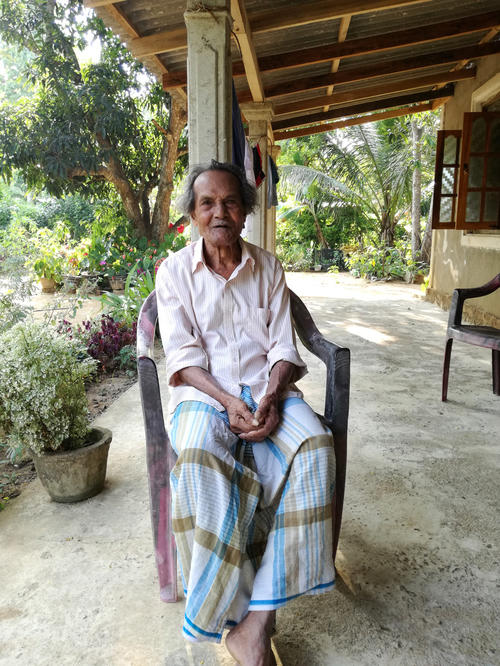Introducing the case study village
The village with its 250 residents is situated north of the urban centre of Anuradhapura and close to the Abhayagiri Buddhist Monastery in ancient Anuradhapura. There are only few shops, no medical facilities and just one bus stop that connects the village to the modern city of Anuradhapura. The urban centre can be reached by bus twice a day or any time by three-wheeler motorcycle taxis.
Spatial structure and water bodies
The village has a clear spatial structure that allows the tracing of the water flow from the wewato the paddy fields (with unequal portions of paddy lands) which are surrounded by the village. The village wewa resembles a big lake, surrounded by thorny bushes and sandy, elevated edges that prevent the tank from spilling over. The water from the tank is transferred into fields by means of underground canals. Additionally, over-ground, artificial canals distribute the water among the houses, offering places for bathing and washing clothes.
The houses in the settlement are provided with governmental pipes for tap water from a bigger, governmentally managed wewain the area. Slight differences in the quality of the houses surrounding the paddy fields in terms of plot size, presence of home gardens, building materials and the size of the houses themselves can be easily observed.
Agricultural practices and household income
According to the interviews, the average household income is below 20,000 LKR and hence below the Sri Lankan median household income. Most households with high incomes tend to be situated in the village centre. The interviewed households cultivate smaller pieces of land with average field sizes of 1-2 acres. The majority of interviewees had inherited the land they work on. Interviewed farmers in the case study village cultivate paddy such as Nadu, Samba and old varieties such as Suwandal or black rice. Depending on the harvest outcome, cultivators either sell the rice or use it for subsistence or both. Some farmers additionally cultivate corn in chena cultivations (a traditional Sri Lankan rain-fedslash and burn technique) for sale. Also, home gardens are acommon sight in the study area.
Village residents without paddy fields are in the lowest socio-economic strata, since all respected village inhabitants have at least a small portion of a paddy tract regardless of whether they cultivate it themselves or lease it out. Paddy owners and cultivators not only gain income or procure the rice itself, paddy work is also a common ground for joint ventures that strengthen group coherence and a source of prestige. Residents of the case study village who do not own fields and have no family members that own paddy fields also have less chances of employment due to their lack of knowledge about paddy cultivation. For this reason, they often have low living standards and resort to petty economic activities.
Actors of the physical environment that share the space with human inhabitants of the village like domestic cattle, wild elephants and other free-roaming animals are also dependent on the water in the wewas and canals. In this shared environment, they have no influence, unless the actors in decisive positions have them in mind and do not let the wewasdry out for their benefit.
